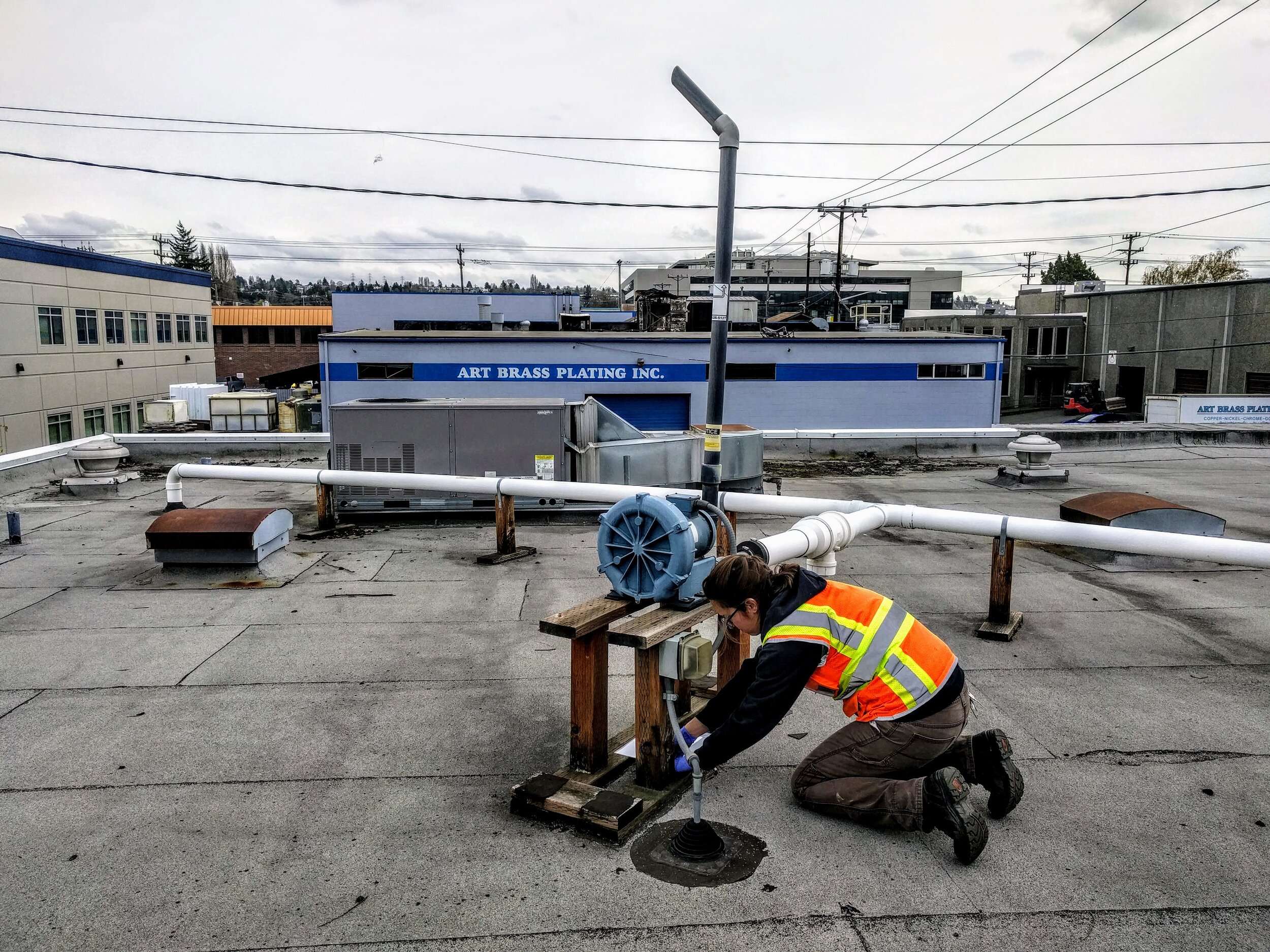In the science and engineering industry, seeing a “PE”, “LG”, “PMP”, or other initials behind someone’s name shows that person went through years of work experience that culminated in a substantial test to confirm the right to practice their area of technical expertise. Many go through this licensing journey but few outside that group know what the process is really like.
We’re telling those stories here. Aspect’s professionals are writing a series of articles that capture the trials and successes of studying for and receiving these career-defining milestones.
Ida Fischer, Professional Engineering (PE) License
Test: 5/17/2021 Awarded: 6/3/2021
Ida at Rialto Beach.
When did you start with your test prep?
My PE test timeline was largely dictated by COVID. I began studying in January 2020, and was rolling along when COVID struck and everything shut down. So, I put studying on the back burner until December 2020 with the goal of taking the test before summer 2021—since I was taking the Environmental PE test, which is administered on a computer, you have to schedule it based on testing center availability (rather than the biannual pen and paper tests). I started to feel the pressure and kicked my test prep into high gear mid-March 2021.
What were your study tactics? How did you get started?
Generally, for standardized tests (SAT, GRE) I like to review testing strategies, but I couldn’t find much discussion of strategy for the PE test any other than “study as much as you can.” Taylor Dayton generously shared her study materials with me, which included a box of various books, practice tests, and some notes. I don’t have an undergraduate in engineering, so I thought a comprehensive review book was a good option to make sure I saw all the possible topics. I worked my way through the entire book (PE Environmental Review by Lindeburg), then about a month before the test, I switched to practice problems. I also used flash cards to drill general info and problem types I was consistently missing. In hindsight, I think it would have been more time-efficient to focus on the problems and then read up on topics that weren’t feeling familiar rather than reading the entire book. Problems force you to engage with key concepts in a different way.
What should a person gearing up to do this know about the mental, physical, and social challenges of test prep?
For most people, studying is a significant time commitment which will likely impact all other areas of your life. It is important to set your own expectations and get the other significant people in your life onboard with what your studying is going to look like. My studying experience was largely impacted by COVID – I didn’t have to cut back on socializing in a significant way since I was already at my maximum Zoom capacity.
Mentally, you have to find a time when you are able study productively. This will look different for everyone – I was a hybrid after work and weekend studier. Physically, I was studying while concurrently training to cycle across Washington. I think the physical activity provided an important mental break. I benefitted from multiple routine activities reinforcing each other.
Walk us through the Big Test Day…
I woke up early enough to have time to have a good breakfast and coffee and allow for traffic on the way to the testing center, but not so early that I had any time to review or extra time to work up any nerves. The Environmental PE test is administered at standard testing centers, so there is the usual review of how to check in and out and use the computer. As I was working through the problems, I kept track of the ones I was confident in, those that I was less confident in, and those that I had to guess on. I had some extra time when I was done, so I reviewed all problems I was less confident in and some of the others as well. Overall, the test felt easier than I expected. On the way home, I celebrated with a cookie. That night before bed, I did not review my flashcards and that felt like relief.
How did you feel when you got the results?
While studying for the PE exam, Ida was also planning a cross-state bike trip. She and her dad and uncle rode from Seattle to Idaho over 6 days along the Palouse to Cascades Trail and smaller country roads. This picture is on PCT either along Keechelus Lake or Lake Easton (hard to keep track on the trail). She was on the trail when she found out she’d passed the exam.
I was delighted. I did a victory cartwheel even though I had biked 70 miles that day. The test results were supposed to be ready in about 10 days, so I had been checking my email even though I was on a bike trip and generally like to eschew email while on vacation.
What lessons did you learn that you’d want others to know?
I believe I could have achieved the same result (passing) with less studying. I think I was so concerned about the possibility of not passing that I didn’t weight the opportunity cost of the amount of studying I was doing.
Washington requires an application and Board approval to even register for the test. I put this off until the 11th hour and the application process was more work than I expected and consequently more frustrating than it needed to be. I’d say as soon as you’re thinking about taking the test, get the application out of the way.































